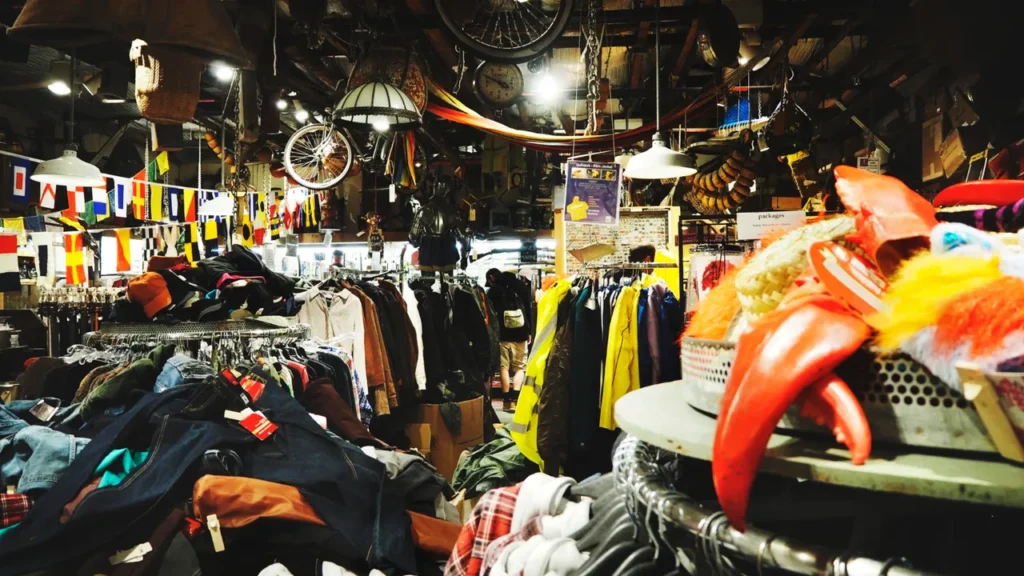Indonesia thrift trade crackdown efforts are intensifying as the government seeks to revive its struggling textile industry. By imposing stricter measures on the import and sale of second-hand clothing, Indonesia hopes to protect local manufacturers, restore jobs, and boost national economic growth. However, the move has sparked debate among traders, consumers, and economists who warn of potential social and economic impacts.
Background: The Rise of Indonesia’s Thrift Trade
In recent years, the thrift trade has become a booming subculture across Indonesia. From bustling markets in Jakarta and Bandung to online thrift shops, millions of consumers have embraced pre-loved fashion for its affordability and uniqueness. But behind the popularity lies a shadow economy of illegal imports that undermine domestic textile production.
Authorities have repeatedly stated that imported second-hand clothes violate import regulations and pose health and safety risks. Despite existing bans, these garments continue to flood local markets through smuggling routes, creating a major challenge for policymakers. The latest Indonesia thrift trade crackdown aims to reverse this trend.
New Enforcement Measures Announced
The government recently introduced tougher penalties for importers and distributors caught smuggling used clothing into the country. Finance Minister Purbaya Yudhi Sadewa confirmed that repeat offenders will now face permanent blacklisting from import activities, a policy shift designed to reduce administrative costs and curb illegal trade more effectively.
“Imprisonment and product destruction were ineffective and costly,” Purbaya noted. “By blacklisting violators, we eliminate repeat offenses and protect local businesses.”
Key Statistics and Seizures
- Between January 2024 and mid-2025, customs authorities seized over 2,500 shipments of used clothing and accessories.
- The total value of confiscated items exceeded 49 billion rupiah (US$2.9 million).
- Most of these goods originated from neighboring countries with surplus textile waste exports.
These figures underscore how deeply entrenched the second-hand import business has become—and why the Indonesia thrift trade crackdown is viewed as essential for the textile industry’s recovery.
Impact on the Domestic Textile Industry
The local textile and garment sector has long been a backbone of Indonesia’s manufacturing economy, employing millions across the supply chain. Yet over the last decade, competition from imported thrift clothing has eroded sales of locally made fabrics and apparel.
According to the Indonesian Textile Association (API), local production utilization rates have fallen sharply. Factory closures, layoffs, and export declines have hurt the industry’s competitiveness in both domestic and international markets. API leaders believe the Indonesia thrift trade crackdown is a necessary lifeline.
“Illegal thrift imports destroy local market confidence,” said API Deputy Chairman David Leonardi. “We welcome strong enforcement because our textile sector cannot compete with cheap, second-hand clothes sold illegally.”
Why Local Producers Struggle
Beyond unfair competition, several factors have weakened Indonesia’s textile manufacturers:
- High production costs: Electricity, logistics, and raw materials remain expensive compared to neighboring producers.
- Limited modernization: Outdated machinery reduces efficiency and increases dependency on imported fabrics.
- Consumer perception: Shoppers often see thrifted goods as more fashionable or international, diminishing demand for local brands.
As a result, the Indonesia thrift trade crackdown is not just about enforcing laws—it’s about creating fair competition that encourages industrial renewal.
Challenges and Criticisms of the Crackdown

While the government’s intentions are clear, critics argue that the crackdown could harm small thrift vendors and low-income consumers. For many Indonesians, second-hand fashion is not merely a trend—it’s an economic necessity. Thrift markets like Pasar Senen in Jakarta provide affordable clothing to millions who cannot afford new garments.
“We are not criminals,” said Rina, a vendor in Bandung. “We sell clothes people can afford. If the crackdown continues, we lose our only income.”
Economists also caution that without complementary reforms—such as supporting local producers and providing incentives for affordable domestic clothing—the crackdown may not deliver lasting benefits. To succeed, authorities must ensure that consumers still have access to reasonably priced, high-quality products made in Indonesia.
Social and Cultural Dimensions
The thrift movement has also evolved into a cultural phenomenon driven by sustainability and individuality. Many young Indonesians embrace thrifting to reduce waste and express personal style. Therefore, the Indonesia thrift trade crackdown risks being perceived as anti-youth or anti-environment if not communicated carefully.
Read also: China’s export slowdown in October
Strategies for a Sustainable Textile Revival
Experts suggest that the crackdown should be paired with a long-term industrial revival plan, which includes:
- Investment incentives for local textile factories to modernize equipment and adopt sustainable production.
- Vocational training programs to re-skill workers affected by the decline in manufacturing.
- Brand development initiatives promoting “Made in Indonesia” fashion as stylish, durable, and eco-friendly.
- Support for micro-vendors to transition from imported goods to locally produced thrift-style items.
By linking enforcement with economic incentives, the Indonesia thrift trade crackdown could transform from a punitive measure into a catalyst for innovation and growth.
Economic Outlook: Will the Crackdown Work?
Indonesia’s textile industry contributes significantly to national GDP and exports, but its global competitiveness has weakened. If the crackdown successfully reduces illegal imports while boosting domestic output, it could help restore confidence and investment in the sector.
However, enforcement alone cannot fix structural problems. Authorities must balance industrial protection with social equity, ensuring the thrift culture is not entirely erased but redirected toward legal, sustainable alternatives. For instance, supporting local recycling programs or encouraging local thrift collections could maintain the affordability consumers rely on while keeping profits inside the national economy.
Conclusion: Balancing Enforcement and Empowerment
The Indonesia thrift trade crackdown marks a defining moment for the country’s textile future. It symbolizes the government’s determination to rebuild its manufacturing strength and defend local industry from external threats. Yet its long-term success will depend on collaboration—between policymakers, manufacturers, vendors, and consumers.
If managed wisely, Indonesia could emerge stronger, with a textile industry that is both competitive and sustainable. But if enforcement overshadows empowerment, the crackdown may inadvertently widen inequality and suppress creativity within one of Southeast Asia’s most vibrant fashion cultures.
For now, all eyes are on how this bold policy unfolds and whether it can truly stitch together a more resilient, self-reliant Indonesian textile economy.



